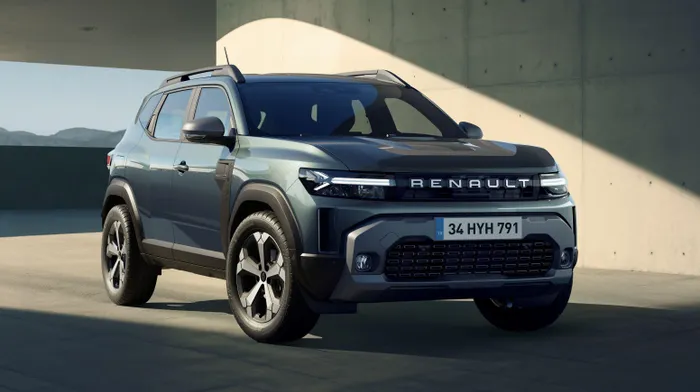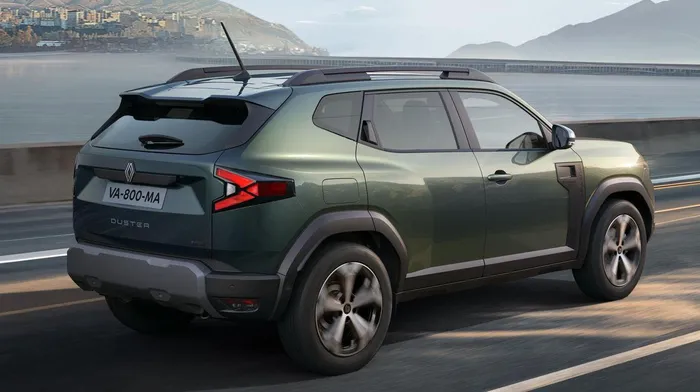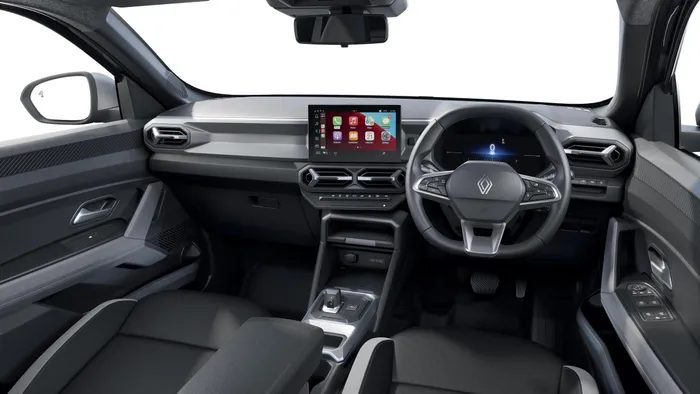New Renault Duster has a cool factor of note, but here’s why the Chinese are eating its lunch

The third-generation Renault Duster has a more confident appearance.
Image: Supplied
I always admired the Renault Duster and its no-nonsense approach.
Amid seemingly every other manufacturer’s efforts to gentrify the SUV, the Duster stood out as an egalitarian hero.
Created in Romania by Renault’s Dacia brand, the original Duster was designed to be one of the most affordable SUVs in the world.
It was the kind of vehicle you could throw the dogs into without worrying about scratches on the diamond-stitched faux Nappa leather, or embark on any adventure of your choice without too much concern about how your muddy gear would ruin the cabin.
It also had an extremely frugal 1.5-litre diesel engine, which was gutsier than its outputs suggested.
The second iteration of the Duster was very much a rinse and repeat of that and now we have the third-generation model in local showrooms.

At 4,343mm, the new Duster is slightly longer than its predecessor.
Image: Supplied
It’s actually quite a looker in my opinion. You might have accused the first two of being a little bland, but this latest redesign has given it some attitude. As a result it appears really comfortable in its own skin and confident in its brand identity.
There are two problems, though.
Gone is the diesel, which is not too surprising, given how European manufacturers have largely abandoned this engine type at the lower end of the market due to emissions laws.
But it's not very affordable anymore, with the 1.3-litre turbopetrol Zen priced at R489,999 and the 1.3T Intens listed at R519,999, while the 1.2T mild hybrid manual 4x4 that we tested recently costs R549,999.
By comparison, the similarly sized Chery Tiggo Cross is priced from R399,900 to R449,900, while the Haval Jolion Pro costs between R391,150 and R519,950, the latter as an ultra-luxurious genuine hybrid.
Even the larger Toyota Corolla Cross is somewhat more affordable, with its window stickers ranging from R414,800 to R561,700.
By all means, the spirit of the original Duster is very much inherent in the latest version, as it feels hardy and very well put together.
Practical cabin
The cabin has a pleasant design and is practical and user-friendly, now featuring a larger 10.1-inch infotainment screen and 7.0-inch digital instrument cluster. But there are some strange omissions, such as the lack of volume knob, meaning adjustments must be made via controls on the side of the steering wheel or via small buttons on top of the touchscreen.

The new cabin boasts a neater design but the materials are still of the cost-cutting variety.
Image: Supplied
But the interior plastics mostly appear to be of the cost-cutting variety, and our test car creaked and rattled occasionally while driving.
One redeeming feature was the powertrain. The 1.3-litre turbocharged petrol engine, which is paired with a 48-volt electrical system, feels sophisticated and refined. Particularly when compared to its Chinese rivals, which still feel a little rough around the edges when it comes to drivetrain refinement.
Comparatively, the Duster is also fairly economical, with our on-board readout showing 8.2 litres per 100km after a few days of purely urban driving.
The manual gearbox did feel somewhat notchy, and we feel that buyers in this segment would surely prefer an auto. Thankfully, the 1.3T non-hybrid Duster models do feature a seven-speed dual-clutch autobox.
It's decent off the beaten track
The Duster does have an ace up its sleeve for those who want to venture off the beaten track.
The option of four-wheel drive is quite rare in this segment, and although it’s not a ‘proper’ off-roader like the Jimny, the Duster 4WD will still tackle far more challenging terrain than your average urban SUV.
The ground clearance of 217mm is certainly generous, and the 4WD Terrain Control system offers five modes, these being Auto, Snow, Mud/Sand, Off-Road and Eco.
It also has downhill speed control for those steeper slopes, although the somewhat innovative ‘low’ first gear on the earlier Dusters, which mimicked low-range to a degree, is no longer there.
What you get as standard
In order to keep pricing from being even higher, Renault offers the 4WD in Zen trim only, but it is more luxurious than the name implies.
Standard features include 17-inch diamond cut alloy wheels, modular roof bars, 10.1-inch touchscreen infotainment system with Wireless Smartphone Replication, 7.0-inch digital instrument cluster, reverse camera, automatic climate control, auto wipers and six airbags.
For the record, the Intens spec specification grade (2WD only) adds to that 18-inch diamond cut alloy wheels, 360 View camera, wireless phone charging, Arkamys 3D sound system and an advanced Driver Assist system (ADAS) that includes Blind Spot Detection.
VERDICT
In 4WD form the new Renault Duster does have a unique selling point in its off-road ability, and it has the cool factor to match, with its stylish new design, while the cabin is suitably practical and feels durable.
But it has become somewhat more expensive, and in this age of cut-price Chinese SUVs that offer oodles of luxury, the Duster simply feels a bit out of touch. Which is a pity, because it is still a very likeable vehicle.
But it’s not necessarily Renault SA’s fault, as importing vehicles from Europe has become really expensive.
One potential silver lining is that the Duster is expected to go into production in India from 2026, and if the local importer is able to source from there at a more competitive price at some point in the future, the Duster could certainly find itself back in the game!
Related Topics: